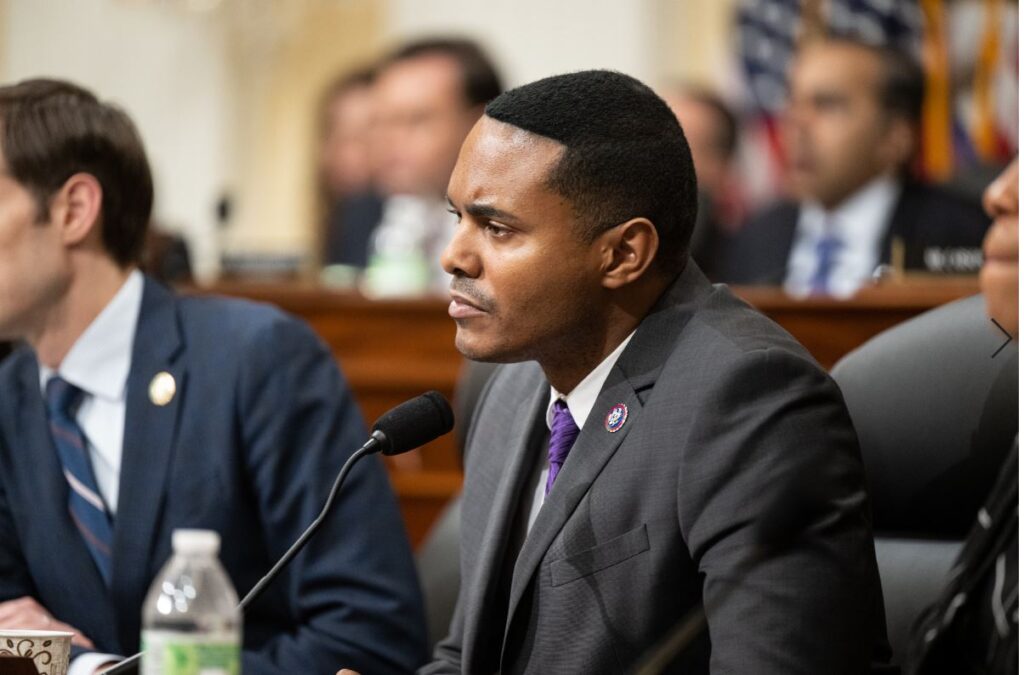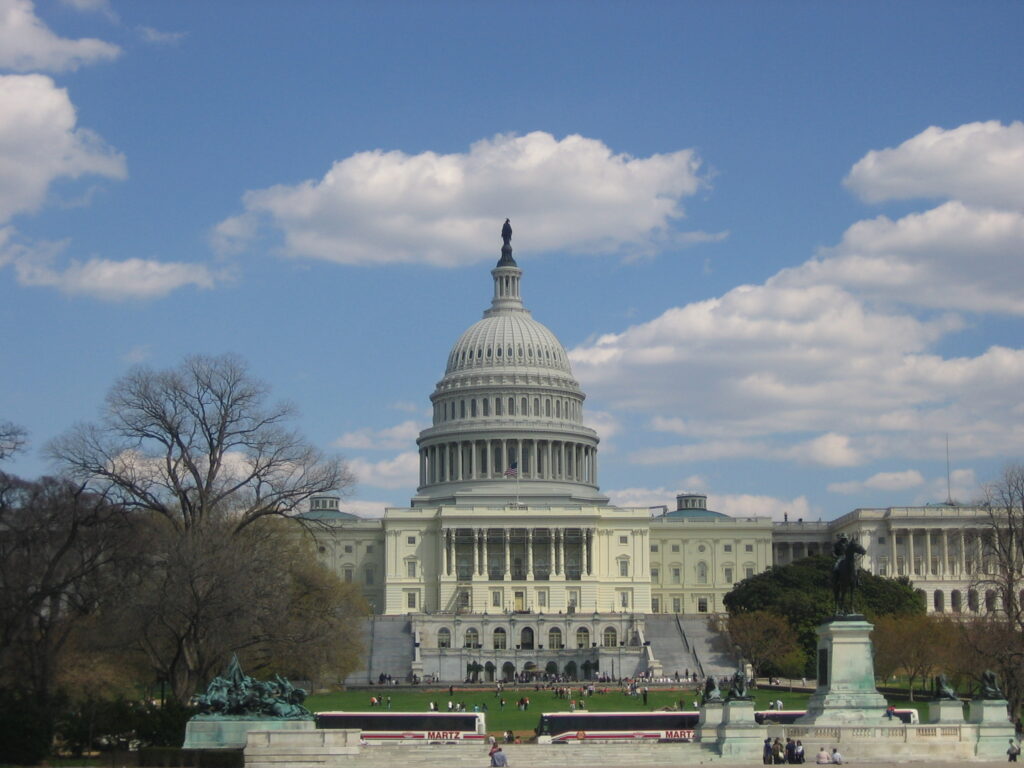
Photo courtesy of the Office of Congressman Ritchie Torres
Bronx Democratic Congressman Ritchie Torres (NY-15) introduced new federal legislation, the Health Affordable Housing Act, alongside Reps. Haley Stevens (D-MI) and Jenniffer González-Colón (R-PR) on Tuesday, April 30.
The move comes as New York City and The Bronx continues to face an affordable housing crisis, further exacerbated by the additional influx of migrants to the City in recent years. For example, in relation to the only current open affordable housing lottery in the northwest Bronx for units at 3745 Riverdale Ave Apartments in the Riverdale section, just west of Kingsbridge, advertised by NYC Department of Housing, Preservation & Development (HPD), the monthly rent for a studio is $2,700, the monthly rent for a one-bedroom apartment is $2,900, and the monthly rent for a two-bedroom apartment is $3,600.
Meanwhile, according to Apartments.com, as of April 2024, the average monthly rent in The Bronx, although still very high at $1,588, is $1,112 less than the monthly rent advertised for a studio at 3745 Riverdale Ave. For comparison, the national average monthly rent in the U.S., according to Apartments.com, is currently $1,515/month, which means Bronx monthly rents are 5% higher than the national average.
Apartments.com also reported that when you rent an apartment in The Bronx, you can expect to pay about $1,567 per month for a studio [though as above, this is clearly not always the case], $1,588 for a one-bedroom apartment, and around $2,033 for a two-bedroom apartment. If you opt for a three-bedroom rental, you could pay $2,375 or more. Meanwhile, in terms of home ownership, according to Redfin.com, in March 2024, Bronx county home prices were up 5.4 percent compared to last year, selling for a median price of $564,000.
“There is no issue more important to me than expanding access to safe, healthy, and affordable housing,” Torres said in the context of the federal bill’s introduction. “When I was growing up in The Bronx, public housing was a lifeline for my family. That being said, far too often, public housing units like mine lack adequate access to essential services, groceries, healthcare, public transportation, and more, leaving their residents siphoned off from the rest of our society and set up to fail.”
The congressman, who represents what was the poorest congressional district in the nation as of 2017, and now remains one of the poorest, stretching from the northwest of the borough to the South Bronx, continued, saying, “I refuse to sit by and allow this unacceptable status quo to continue.” Torres said the new bill would re-invigorate the nation’s affordable housing infrastructure and ensure such new housing would be established with a host of necessary services in close proximity.
According to the National Low Income Housing Coalition, the United States is short 7.3 million homes affordable and available for extremely low-income renters. The legislators said that in addition, too often, necessary services like public transportation or grocery stores are out of reach for American communities. Included below are some of the examples they provided in this regard:
- Nearly 16% of adults earning less than the federal poverty level lacked reliable transportation in 2022, according to the Centers for Disease Prevention & Control.
- According to the U.S. Department of Agriculture Research Service, an estimated 1.9 million households are in low-income and low-access census tracts, are far from a supermarket, and do not have a vehicle. An additional 0.2 million people are more than 20 miles from a supermarket.
They said such limited access to services can negatively impact the health of communities, and that according to the Urban Institute, “Neighborhood conditions can also lead to poor health of residents. People need to be able to find grocery stores with fresh, inexpensive produce, clean water, walkable amenities for exercise, and conditions that lower stress such as access to jobs and low crime.”

File photo
Torres, Stevens, and González-Colón said the Healthy Affordable Housing Act would [if passed] create affordable rental housing with necessary services nearby or within buildings with affordable housing units. They said the legislation would cover the following points:
- authorizes $100 million a year for five years for a grant and loan program at the Department of Housing and Urban Development;
- allows grants and loans to the following entities:
- units of general local government;
- tribal governments or tribally designated housing entities;
- owners or developers of affordable dwelling units;
- public housing agencies;
- organizations with a mission that involves the creation of affordable housing; and
- any combination of the entities above;
- grants and loans may be used to develop, create, or preserve affordable rental dwelling units in neighborhoods facing a shortage of affordable housing, as determined by HUD and neighborhoods must contain at least one of the following amenities:
- a federally qualified health center;
- a health care provider who accepts Medicaid and provides primary care services;
- a grocery store that accepts SNAP or Nutrition Assistance Program and WIC;
- a state licensed childcare provider or an eligible childcare provider under the Childcare and Development Block Grant Act;
- a pharmacy; OR
- public transportation;
- any rental units that receive funding through this program would have to meet specific HOME Investment Partnership Program Requirements. HOME is the primary federal tool of states and local governments for the production of affordable rental housing for low-income to extremely low-income families. Units would have to:
- be occupied by a low-income household, which is defined at or below 80% of area median income (AMI);
- 90% of rental units benefiting from the grant and loan program nationwide must benefit households with incomes at or below 60% of AMI;
- at least 20% of the units in a building that get funding through this program must house very low-income households, which is defined at or below 50% of the area median income (AMI);
- meet HOME program rent price requirements to keep rents affordable to lower-income households;
- units will remain as affordable housing “for the remaining useful life of the property;”
- the [housing] secretary shall give preference to applicants developing, creating, or preserving qualifying affordable dwelling units that are not more than a mile from two or more of the amenities listed above;
- the [housing] secretary shall give preference to applicants developing, creating, or preserving qualifying affordable dwelling units that are located in buildings that have or will contain any of the amenities listed above;
- two years after the date that any qualifying affordable dwelling unit is first occupied after being developed, created, or preserved, and every 2 years thereafter for 10 years, HUD shall conduct a voluntary survey of residents in such dwelling unit about any benefits they perceive associated with being physically near such amenities;
- each report should evaluate whether nearby amenities identified have closed or changed location in the time since the previous report was submitted.
The proposed legislation is supported by Michigan State Housing Development Authority, Oakland County Michigan, Corporation for Supportive Housing, National Community Development Association, Michigan Hospital Association, Habitat for Humanity Oakland County.
“I would not be where I am today without the stability affordable housing gave me and my family. I want to ensure every American, no matter their zip code, can say the same, and that’s what this bill tries to achieve,” Torres said.




